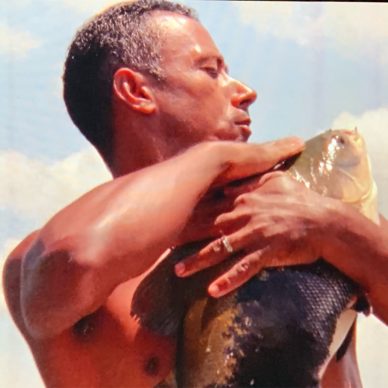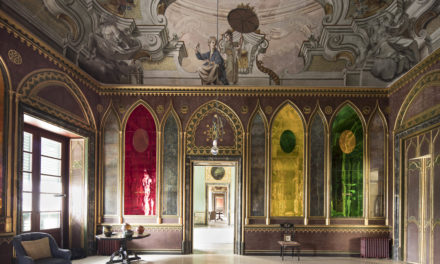The extraordinary new production of Video art
Video art, like painting or sculpture, is an extraordinary mode of expression and one that is widely explored in the contemporary period. Two great artists have created new milestones in the field, each of them inventing a kind of compilation of found images, pieced together to create a work of art.
Marclay and Jafa

Tacita Dean
The Swiss-American Christian Marclay with “The Clock”, which addresses the passage of time as seen through lots of little clips taken from global cinema (the artist was the subject of a retrospective at the Centre Pompidou in 2022, see the report here) and the American artist Arthur Jafa, who juxtaposes images sourced on the internet loosely relating to love, beauty and violence and set to a soundtrack in his “Love is the message, the message is death” (he was the subject of a retrospective at Luma in Arles in 2022 Se the report here), both ushered in new key phases in 21st-century video art. These two pieces are now part of the history of contemporary art.
A new milestone
At the Bourse de Commerce in Paris, the British artist who lives between Berlin and Los Angeles, Tacita Dean (born in 1965), has also succeeded today in establishing a new milestone in video creation. (Nevertheless the artist prefers that one say “film” and not video). She is famous for her photographic work, in particular her very large format images of landscapes, trees and mountains on which she makes subtle interventions by hand, among other things, to change the colours and shapes (1).
Rotunda and the French colonies

The rotunda of the Bourse de commerce during Danh Vo show
But for the rotunda at the Bourse de Commerce in Paris she has devised a new kind of film installation. The ceiling of the rotunda is decorated with 19th-century frescoes celebrating French commerce, in particular in relation to the French colonies. Tacita Dean says that she was disturbed by this décor, which was going to literally loom over her work. She found a response to what she calls images of “colonial exploitation” by showing a personal account of her travels across the globe. “My answer was to think about my relationship to the world now. I realised I’ve travelled to many places making films. Everything is just the world and my world. Berlin, Madagascar, Japan, Rotterdam, Utah…”
35 millimetre films

Tacita Dean
In her extremely sophisticated installation, the projector seems to play the main role, since it is located in the centre of the huge circular space inside a pavilion conceived inside it, in concrete, designed by Tadao Ando. It projects two 35 millimetre films which serve as frames for other projections of films that she has made and that are embedded within the first films. The noisy machine that reads the fragile film reel projects images that are constantly changing across four metres and in two parts.
Geography Biography

Tacita Dean
The projections are mobile, spinning around the room. “Geography, biography in the rotunda is a cylinder within a cylinder,” she explains. “It’s two portrait-format 35 millimetre films and it’s made from all my art takes and all my super 8 films that I have taken over the last forty years, and it’s put together in a collage embedded in a 35-millimetre film frame. I’ve never moved an image like that before. It’s very plastic. And that’s what film is. It’s very material.

Tacita Dean
And also because I’m using my masking technique inside the film frame it’s very embedded inside it. The way the film frame model has a huge materiality in it. In a way, it’s the closest you can be to drawing in light.” From an image of a giant hailstone to a postcard of European flags via Tacita doing pirouettes on a chair… The result of this installation is a hypnotic feeling in which each image is juxtaposed with another image, making the ensemble feel almost abstract and alluring.
Gentle hum of the film

Tacita Dean
To sum up: the films projected in large format which follow a kind of rotation around the nave are also embedded with changing videos. Everything is without sound, apart from the gentle hum of the film reel passing over the projector. Unconsciously, this sound becomes associated with a kind of nostalgia, reminiscent of what we can feel while looking at old family photos.
The turning film

Tacita Dean
In French, “tourner un film” means “to shoot a film” – the word “tourner” literally meaning “to turn”. Here, the film itself is literally turning too.
Tacita Dean dislikes appearing on camera but she agreed to do it all the same, in addition to a one on one interview during which, for 3.5 minutes, it was her turn to be filmed.

Tacita Dean
Until 18 September.
https://www.pinaultcollection.com/fr/boursedecommerce/tacita-dean
(1) Some of these are currently on show at the Bourse de Commerce and also at the Schaulager in Basel.
Support independent news on art.
Your contribution : Make a monthly commitment to support JB Reports or a one off contribution as and when you feel like it. Choose the option that suits you best.
Need to cancel a recurring donation? Please go here.
The donation is considered to be a subscription for a fee set by the donor and for a duration also set by the donor.




